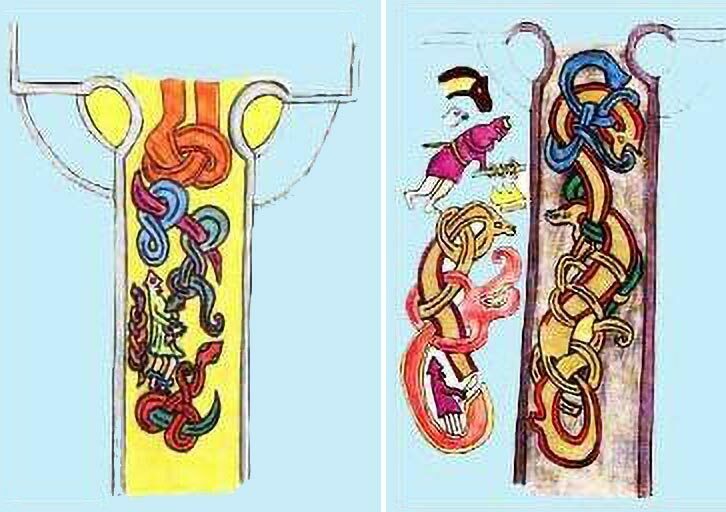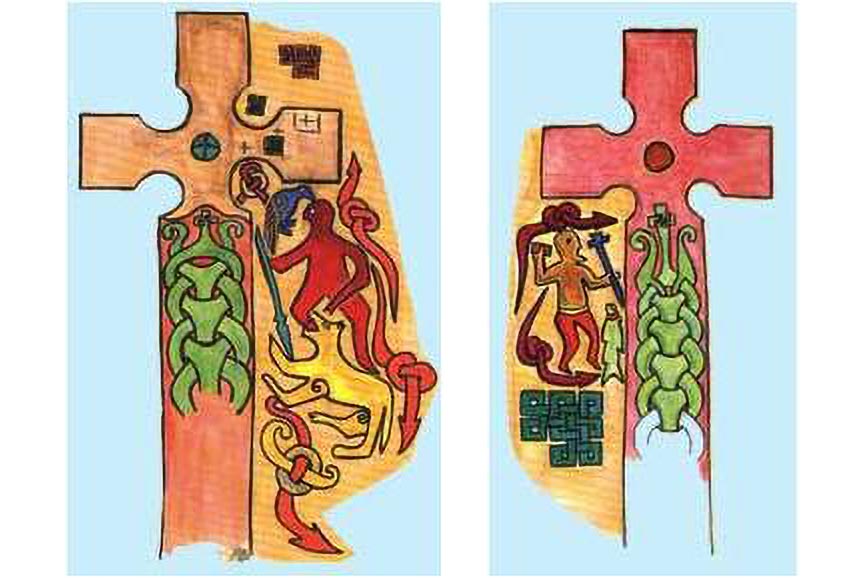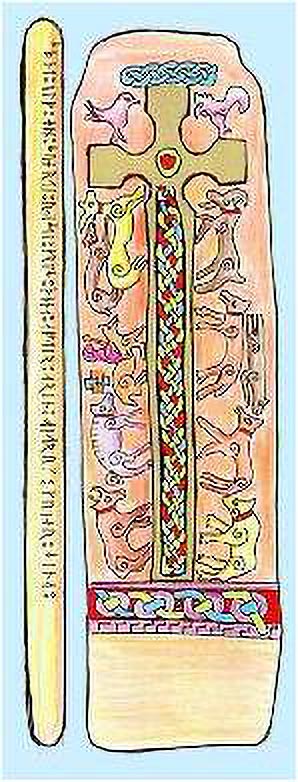About
Site Directory
Copyright © 2025 www.isleofman.com
All Right Reserved
powered by 
Copyright © 2025 www.isleofman.com
All Right Reserved
powered by 


One side of this cross depicts the Sigurd and Fafnir saga. On the left side of the shaft, Sigurd is shown killing Fafnir and roasting his heart. Below that Sigurd is seen with his magic sword.
On the other side of the cross, the shaft shows interlaced serpents surrounding a figure wearing a tunic and cap. One of the serpents is biting his left shoulder.

There is now only a small section of this cross surviving.
On one side the scene depicts the figure of a man, presumably Christ, treading on the adders and thus symbolising the triumph of good over evil. He has a cross in his left hand, and a book in his right - both Christian symbols.
The Runic inscription runs downwards instead of upwards, which is more usual. It reads:
"Thorwald erected this cross.
Then there I shall come One yet mightier,
Though Him I dare not name."
The other side illustrates the devouring of Odin by the Fenris Wolf. The god's right foot is in the jaws of the wolf as he attacks it with the spear. In this myth, the wolf is slain by Odin's son, Vidar the Silent.
 Sandulf's Cross
Sandulf's CrossHeight: 6'4"
Width: 16"
Depth: 5"
The cross originally stood in the churchyard, but it was moved in 1886 to the shelter of the church.
A runic inscription which is cut into the edge of the stone records that SANDULF THE BLACK ERECTED THIS CROSS TO THE MEMORY OF ARINBJORG HIS WIFE.
Animals are etched all over it, and Mrs Richard's notes that:
"On the first side, above each arm, is a bird; on the right is a cock, on the left either a hen or a dove. The spaces at each side of the cross are filled with various beasts, their feet towards the shaft and their heads towards the head of the cross.
"On the left can be seen a stag, chased by a dog, then a man on horseback armed with a club or spear. Then follow two rings interlaced, a boar and a long-horned ox. On the right is a goat, a wolf, a hound and a hind, and lastly a bear.
"Above the right arm (of the second side) is the figure of a cock, and on the left, possibly a raven. Down the left of the shaft is a stag, a knotted serpent, a wolf, a bear, a second wolf and possibly a third wolf, or perhaps a dog."
It is possible that some of the animals which Sandulf depicted might have been intended as symbolic of features in Norse mythology. On the other hand, they may all have been purely decorative.